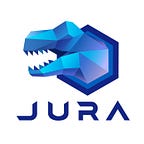Let’s learn about dapps!
Today we’re going to be learn about decentralized applications, also known as dapps. We’ll learn what they are, how they work and give examples of the ones you’ve likely interacted with. To understand dapps, readers need to first understand what a smart contract is.
Smart Contracts
Smart contract technology was first introduced by Ethereum in 2015. This is why Ethereum’s technology is sometimes referred to as blockchain 2.0, because it created many more possibilities other than just financial transactions previously supplied by bitcoin. Essentially smart contracts allow two or more people to enter into an agreement based upon specified conditions. Once these conditions have been met the smart contract is executed automatically.
To apply a smart contract to a real world example, think about selling a car. Usually you have to meet with someone, hope that they bring the agreed upon of my money, and also hope that they pay you in a way that’s easily accessible like cash. Maybe you choose to take a deposit to solidify the deal or maybe you don’t. Now let’s pretend that instead of that this time around you decided to use a smart contract for the sale of your car. So you put your car into a smart contract. This is possible using a token that represents the ownership of your car. You set the price at a certain amount of Ethereum you want. The smart contract works in a way that if someone sends you that amount to the eth that you’re asking for, then the token is sent to the person’s address. It means that the person now has ownership of the car. But using smart contracts you don’t have to worry about someone trying to haggle the price down or not showing up with enough money. You have complete control of the entire situation. All you have to do is pay the ether transaction fee for the execution of the smart contract and you’re done.
Now that we understand what a smart contract is and how it works let’s move on to understand what dapps are.
dapps
A dapp or a decentralized applications consists of backend code that runs on a decentralized peer to peer network. Let me define that quickly: backend code is the code that runs on the server that receives requests from the clients or the users. The backend also includes the database which will store all of the data for the application. The frontend is the code that is executed on the user side. This code runs in the user’s browser and creates an interface for people to interact with in a meaningful way. Normally apps need to be installed directly onto a user’s device. Think about going to the app store on your phone and downloading something locally. The App Store is a centralized location that you can access applications from.
You might be thinking well why does that matter? Centralized? Decentralized? Why is that important. Imagine if Apple started heavily censoring the applications on the App Store, not allowing certain genres or types to be listed. That would leave you with very little options. DAPPS can protect this from being an issue. Dapps often have the following characteristics: they run on a blockchain, their code is made open source, and the process operates autonomously without any person or group controlling the majority of the tokens.
why do we need dapps?
Simple: Centralization of the app store could hinder your purchasing power. YouTube and Facebook are fantastic examples of the downsides of centralization. The YouTube management team have full control over the videos that are uploaded. If there’s something that the platform does not agree with they can delete the video.
The same goes for Facebook. People can be kicked off the platform with little to no explanation because the company decided that they no longer wanted the person to have access. Daps remove that as a possibility by removing the centralized aspect. Plus because they’re functioning on a source that is the blockchain, they’re immutable and tamper proof.
Examples
Payment processing
No need to integrate with a fiat payment provider to accept funds from users as users can transact directly using crypto currencies.
User credentials
Using a system of public and private keys, users can transact and control their own funds without an extra step needed for verification.
Trust and audit ability
The open source aspect of the gaps allows for transparency on the network, removing the need for a third party trust. A public record on the blockchain also makes transaction information easy to audit by all users.
Here are some examples of Dapps that we, in the crypto community, are pretty familiar with. Maybe you’ve heard of augur, which is a prediction market. I’m sure most of you had heard of crypto kiddies which is a ethereum based virtual game. Those are just to name a few. There are many more and there will likely be many more.
Final thoughts
The DAP landscape is rapidly evolving. While ethereum is currently the platform of choice for DAP developers, Cardona Lisk, Qtum and Neo are also popular for the dapp development. As these newer platform projects like Cardano get further in their development, I’d wager that we’re going to see a huge influx in dapp creation. Dapp development is in a very young stage but the benefits dapps provide, which traditional centralized applications do not, suggest that we can expect to see impressive new functionalities and new use cases for blocking tech in the near future.
Thanks for reading this. Hope you learnt something new. Don’t forget to like, share and clap for this.
‘Till next time.
— Join the Jura community to stay updated with the latest news:
· Get on our Telegram channel
· Follow us on Twitter, LinkedIn, and Reddit
· Read weekly articles on the Jura medium channel
· Telegram community in 한국 and Tiếng Việt,
· Instagram: juranetwork
For more information, visit jura.network
